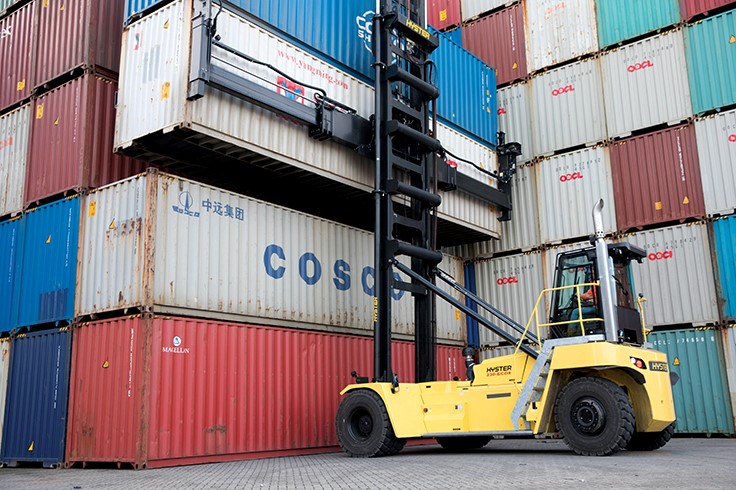
Boost Container Handling Capacity – Severe congestion in container yards can wreak havoc on port terminal operations and subsequent stages of the supply chain. Disarray opens the door for excess container movements, and inefficient use of container handlers can in turn lead to longer queues and waiting times for inbound ships and outbound trucks alike. But as supply chains adapt to ongoing disruption in the wake of the pandemic and container volumes continue to reach record-breaking levels, the threat of logjams is only intensifying. Add to that the global imbalance in the geographic distribution of shipping containers that has produced gluts of empty containers at some ports and shortages at others and charting a course for efficient container management comes against a backdrop of uncertainty. Under these conditions, port terminal operations face pressure to squeeze the most efficiency possible out of their container handling operations, while lowering the cost per container moved.
DOUBLE CONTAINER HANDLING UNLOCKS PRODUCTIVITY, CAPACITY FOR PORTS
While the pressure to move more containers remains constant, ports are also grappling with the challenge of improving ground slot usage to mitigate rising real estate costs and space limitations. In fact, the Global Port Trends 2030 report by Deloitte found that increased focus on spatial strategy will be a key focus for ports over the next decade, due to space scarcity in existing urban ports and increasing complexity of port operations. But what does the workflow – and the equipment – for double container handling look like in practice? Just as the name suggests, double container handling allows operations to move more empty containers at the same time with less equipment. In addition to the productivity advantage, some heavy-duty double-handling equipment built for high lifting can stack containers higher, bolstering Twenty-foot Equivalent Unit (TEU) capacity, allowing port terminals to make greater use of vertical space. For example, empty container handlers that enable operators to build stacks up to nine containers high can significantly increase capacity and optimize yard space. Even if weather conditions, local policies or other constraints prevent operations from stacking nine high, increasing stacks from five to six containers can still boost capacity by up to 20%.
Double handling empty containers is well-suited to dedicated empty container yards and can also be deployed in straddle carrier ports. In a dedicated empty yard, double handling can allow operations to reduce the amount of equipment required to service trucks, helping reduce traffic congestion. Traffic flow and safety can also be supported by separating pedestrian, truck and container handling equipment traffic, with each having designated areas that do not overlap. While separating traffic could also be done with single empty container handling, prohibiting trucks from driving into the container stack area means longer driving distances for equipment to deliver containers to trucks. As a result, this workflow is far more economical with double handling. The increased volume of containers handled simultaneously can actually lower the cost per container. Moving two containers at the same time can also:
- Reduce driving distance – which in turn lowers fuel usage, tire wear and handling time per container, and increases equipment productivity
- Reduce time to lift and lower containers to high positions – which also reduces fuel usage, limits handling time per container and increases equipment productivity
DOUBLING DOWN ON PRODUCTIVITY
While the industry grapples with disruption and continued evolution, the drive for efficiency and doing more with less remains constant. Innovative handling strategies, enabled by double-container handling equipment, will have an increasingly important role to play for operations in need of raw productivity gains and more efficient use of increasingly scarce space and labor. But don’t take it from me – the Deloitte Global Port Trends 2030 report predicts, “Successful ports will be the ones that increase their spatial productivity. Unsuccessful ports will have lost their reason to exist and be swallowed by their respective city.











